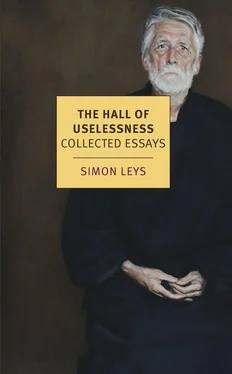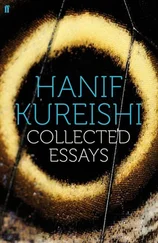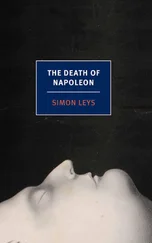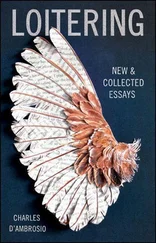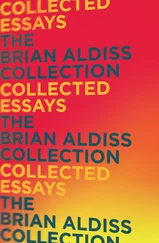Secondly, in the course of his exhaustive surveys of Chinese official documentation, the analyst must absorb industrial quantities of the most indigestible stuff; reading Communist literature is akin to munching rhinoceros sausage, or to swallowing sawdust by the bucketful. Furthermore, while subjecting himself to this punishment, the analyst cannot allow his attention to wander, or his mind to become numb; he must keep his wits sharp and keen; with the eye of an eagle that can spot a lone rabbit in the middle of a desert, he must scan the arid wastes of the small print in the pages of the People’s Daily and pounce upon those rare items of significance that lie buried under mountains of clichés. He must know how to milk substance and meaning out of flaccid speeches, hollow slogans and fanciful statistics; he must scavenge for needles in Himalayan-size haystacks; he must combine the nose of a hunting hound, the concentration and patience of an angler and the intuition and encyclopaedic knowledge of a Sherlock Holmes.
Thirdly — and this is his greatest challenge — he must crack the code of the Communist political jargon and translate into ordinary speech this secret language full of symbols, riddles, cryptograms, hints, traps, dark allusions and red herrings. Like wise old peasants who can forecast tomorrow’s weather by noting how deep the moles dig and how high the swallows fly, he must be able to decipher the premonitory signs of political storms and thaws, and know how to interpret a wide range of quaint warnings — sometimes the Supreme Leader takes a swim in the Yangtze River, or suddenly writes a new poem, or sponsors a ping-pong game: such events all have momentous implications. He must carefully watch the celebration of anniversaries, the non-celebration of anniversaries, and the celebration of non-anniversaries; he must check the lists of guests at official functions and note the order in which their names appear. In the press, the size, type and colour of headlines, as well as the position and composition of photos and illustrations, are all matters of considerable import; actually they obey complex laws, as precise and strict as the iconographic rules that govern the location, garb, colour and symbolic attributes of the figures of angels, archangels, saints and patriarchs in the decoration of a Byzantine basilica.
To find one’s way in this maze, ingenuity and astuteness are not enough; one also needs a vast amount of experience. Communist Chinese politics are a lugubrious merry-go-round (as I have pointed out many times already), and in order to appreciate fully the déjà-vu quality of its latest convolutions, you would need to have watched it revolve for half a century. The main problem with many of our politicians and pundits is that their memories are too short, thus forever preventing them from putting events and personalities in a true historical perspective. For instance, when, in 1979, the “People’s Republic” began to revise its criminal law, there were good souls in the West who applauded this initiative, as they thought that it heralded China’s move toward a genuine rule of law. What they failed to note, however — and which should have provided a crucial hint regarding the actual nature and meaning of the move in question — was that the new law was being introduced by Peng Zhen, one of the most notorious butchers of the regime, a man who, thirty years earlier, had organised the ferocious mass accusations, lynchings and public executions of the land-reform programs.
Or again, after the death of Mao, Western politicians and commentators were prompt to hail Deng Xiaoping as a sort of champion of liberalisation. The Selected Works of Deng published at that time should have enlightened them — not so much by what it included, as by what it excluded; had they been able to read it as any Communist document should be read, i.e. by concentrating first on its gaps, they would have rediscovered Deng’s Stalinist-Maoist statements, and then, perhaps, they might have been less surprised by the massacres of 4 June 1989.
More than half a century ago, the writer Lu Xun (1881–1936), whose prophetic genius never ceases to amaze, described accurately the conundrum of China-watching:
Once upon a time, there was a country whose rulers completely succeeded in crushing the people; and yet they still believed that the people were their most dangerous enemy. The rulers issued huge collections of statutes, but none of these volumes could actually be used, because in order to interpret them, one had to refer to a set of instructions that had never been made public. These instructions contained many original definitions. Thus, for instance, “liberation” meant in fact “capital execution”; “government official” meant “friend, relative or servant of an influential politician,” and so on. The rulers also issued codes of laws that were marvellously modern, complex and complete; however, at the beginning of the first volume, there was one blank page; this blank page could be deciphered only by those who knew the instructions — which did not exist. The first three invisible articles of these non-existent instructions read as follows: “Art. 1: Some cases must be treated with special leniency. Art. 2: Some cases must be treated with special severity. Art. 3: This does not apply in all cases.”
Without an ability to decipher non-existent inscriptions written in invisible ink on blank pages, no one should ever dream of analysing the nature and reality of Chinese communism. Very few people have mastered this demanding discipline, and, with good reason, they generally acknowledge Father Ladany as their doyen.
* * *
After thirty-six years of China-watching, Father Ladany finally retired and summed up his exceptional experience in The Communist Party of China and Marxism, 1921–1985: A Self-Portrait . In the scope of this article it would naturally not be possible to do full justice to a volume which analyses in painstaking detail sixty-five years of turbulent history; still, it may be useful to outline here some of Ladany’s main conclusions.
The Communist Party is in essence a secret society. In its methods and mentality it presents a striking resemblance to an underworld mob.[1] It fears daylight, feeds on deception and conspiracy, and rules by intimidation and terror. “Communist legality” is a contradiction in terms, since the party is above the law — for example, party members are immune from legal prosecution: they must be divested of their party membership before they can be indicted by a criminal court. (That a judge may acquit an accused person is inconceivable: since the accused was sent to court, it means that he is guilty.) Whereas even Mussolini and Hitler originally reached power through elections, no communist party ever received an electorate’s mandate to govern.
In China, the path that led the communists to victory still remains partly shrouded in mystery. Even today, for party historians, many archives remain closed and there are entire chapters that continue to present insoluble riddles; minutes of decisive meetings are nowhere to be found, important dates remain uncertain; for some momentous episodes it is still impossible to identify the participants and to reconstruct accurately the sequence of events; for some periods one cannot even determine who were the party leaders!
As Ladany points out, a communist regime is built on a triple foundation: dialectics, the power of the party, and a secret police — but, as to its ideological equipment, Marxism is merely an optional feature; the regime can do without it most of the time. Dialectics is the jolly art that enables the Supreme Leader never to make mistakes — for even if he did the wrong thing, he did it at the right time, which makes it right for him to have been wrong, whereas the Enemy, even if he did the right thing, did it at the wrong time, which makes it wrong for him to have been right.
Читать дальше
